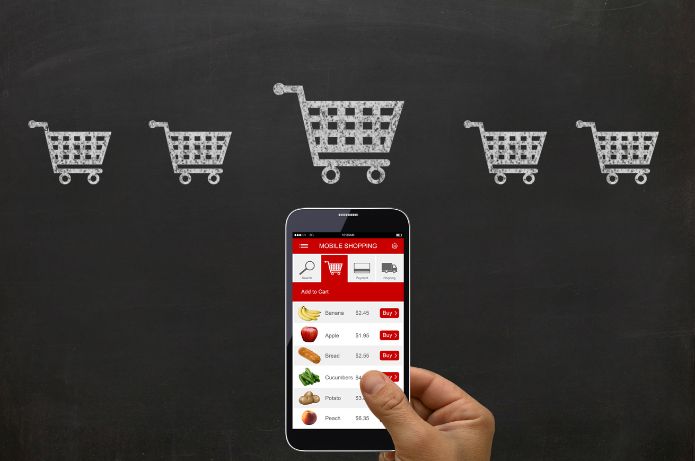In today's digital age, influencer marketing and partnerships with content creators have emerged as powerful strategies for e-commerce brands to connect with their target audience and drive business growth. As consumers become increasingly immune to traditional advertising tactics, brands are turning to influencers and content creators to promote their products in authentic and engaging ways. This article explores the world of influencer marketing and partnerships with content creators in e-commerce, highlighting its benefits, best practices and the future of this rapidly evolving industry
The Rise of Influencer Marketing:
Influencer marketing is based on the idea that recommendations from trusted and respected individuals can have a significant impact on consumers' purchasing decisions. With the rise of social media, the digital influencers – individuals with large online followings – they have become valuable partners for e-commerce brands. These influencers have built engaged communities around specific niches, from fashion and beauty to technology and lifestyle. When collaborating with influencers, brands can reach their target audience in a more targeted and organic way, leveraging the trust and credibility that influencers inspire
Partnerships with Content Creators:
Partnerships with content creators take the concept of influencer marketing a step further. Besides simply promoting products, content creators collaborate with brands to develop original and engaging content that resonates with their audience. This can take the form of sponsored posts on social media, videos, blogs, or even co-designed product lines. By aligning with content creators who share your values and aesthetics, brands can reach new audiences, drive engagement and cultivate deeper connections with customers
Benefits for E-commerce Brands:
Influencer marketing and partnerships with content creators offer a number of benefits for e-commerce brands:
1. Greater Reach and Visibility: Collaborating with influencers and content creators allows brands to expand their reach and increase their visibility among specific target audiences
2. Authentic Engagement: Influencers and content creators are experts in creating genuine and captivating content that resonates with their followers. By taking advantage of this authenticity, brands can stimulate meaningful engagement and build trust with their audience
3. Lead Generation and Conversions: Recommendations from trusted influencers can drive valuable traffic to brands' e-commerce sites, resulting in qualified leads and increased conversion rates
4. Consumer Insights: Partnerships with content creators provide brands with valuable insights into preferences, consumer behaviors and feedbacks, allowing for more focused marketing and product development
Best Practices for Successful Partnerships:
To maximize the impact of influencer marketing and partnerships with content creators, e-commerce brands should
1. Choose Aligned Partners: Collaborate with influencers and content creators whose values, aesthetics and audience align with the brand's identity and objectives
2. Prioritize Authenticity: Encourage partners to create genuine and trustworthy content that honestly highlights the strengths and benefits of the products
3. Define Clear Goals and Metrics: Set clear objectives for each partnership and track relevant metrics, as reach, engagement, cliques and conversions, to measure success
4. Promote Creativity and Innovation: Give content creators the creative freedom to develop innovative and engaging content that resonates with their unique audience
The Future of Influencer Marketing in E-commerce:
Looking to the future, influencer marketing and partnerships with content creators are expected to continue evolving and shaping the e-commerce landscape. With the emergence of micro and nano-influencers, brands will have even greater opportunities for granular segmentation and authentic engagement. Technological advancements, like live streaming, augmented reality and artificial intelligence, they also promise to transform the way influencers and content creators interact with their audiences and promote products. As consumers become increasingly demanding for genuine content and personalized experiences, brands that embrace strategic partnerships with influencers and content creators will be well positioned to thrive in the e-commerce landscape
Conclusion:
In the dynamic scenario of current e-commerce, influencer marketing and partnerships with content creators have emerged as powerful tools for brands to connect with their target audience in authentic and impactful ways. Title: Unlocking the Power of Influencer Marketing and Partnerships with Content Creators in E-commerce
By leveraging the credibility and reach of influencers and collaborating with innovative content creators, brands can drive awareness, engagement and sales, while building lasting relationships with customers
However, to achieve success in influencer marketing and partnerships with content creators, brands must adopt a strategic and data-driven approach. This involves identifying the right partners, set clear goals, prioritize authenticity and track relevant metrics to continuously optimize your strategies
Furthermore, as the influencer marketing landscape continues to evolve, brands must be prepared to adapt and innovate. This may involve exploring new platforms, content formats or partnership models that resonate with changes in consumer preferences and behaviors
Ultimately, the power of influencer marketing and partnerships with content creators lies in their ability to humanize brands, stimulate emotional connections and drive tangible business results. By embracing these strategies and staying at the forefront of industry trends, e-commerce brands can unlock new levels of growth, customer engagement and success in today's digital market
As the e-commerce landscape continues to evolve rapidly, it is imperative that brands remain agile, adaptable and open to new opportunities. Leveraging the power of influencer marketing and partnerships with content creators, companies can not only survive, but to thrive in this dynamic and competitive environment
Therefore, for e-commerce brands looking to take their marketing and customer engagement to the next level, now is the time to embrace the exciting and ever-evolving world of influencer marketing and partnerships with content creators. By doing this, they can forge authentic connections, drive growth and leave a lasting mark on the digital landscape











